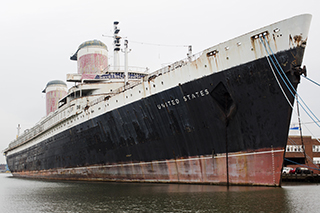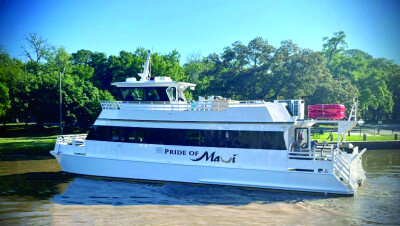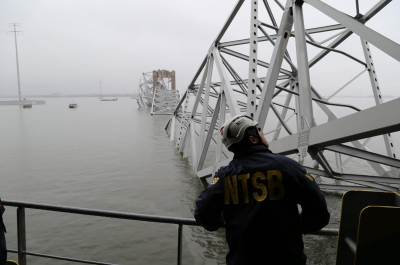It may be an unhappy Halloween for the SS United States, a mighty artifact from the peak era of U.S. merchant maritime power and now a familiar sight along Philadelphia’s working waterfront.
Tied up there since 1996, the 990’x101’ passenger liner has spent the last few years in care of the SS United States Conservancy, which is seeking a permanent home for the ship – possibly finding it a place in the ongoing revitalization of New York City’s waterfront, as a mixed use museum-office space.
The SS United States. SS United States Conservancy photo.It would be more than just another ship museum, said Susan Gibbs, the conservancy’s executive director and granddaughter of William Francis Gibbs, the naval architect who designed the United States. Her group envisions a monument to the country's maritime heyday and its long technological leadership.
“With all the attention being given to plans for the Titanic II – a replica of an ocean liner that met a tragic end – we still have the chance to save the most famous ship that didn’t sink,” Gibbs wrote in an appeal to donors. “If this singular American achievement is destroyed, we will lose an unparalleled opportunity to create jobs, honor our history, and celebrate the nation’s enduring capacity for innovation.”
But for years the project has been burning charges for moorage, insurance and other costs that now total up to $60,000 a month. If they can’t get some big new donor commitments for $500,000 to cover fixed costs, a decision to send the United States to the shipbreakers could come within days, backers say.
“We’ve never been closer to saving the ship, and we’ve never been closer to losing her,” Gibbs told NBC News in a plea televised Monday.
The interview was part of a media and fundraising push in recent months to stave off scrapping the ship. Since it organized in 2009, with a board of directors, staff and consultants, the conservancy has pulled this off before, when in February 2011 Philadelphia philanthropist Gerry Lenfest gave $5.8 million, enabling the group to buy the ship.
Entering service in 1952, the 43,500-ton liner cruised at 30.5 knots and could dash at over 38 knots, powered by eight Iowa-class Babcock & Wilcox boilers and Westinghouse geared steam turbines. Subsidized by the U.S. government, the vessel was capable of conversion to a troopship. If the Cold War in Europe went hot, defense planners thought, the United States would be able to outrun danger from Soviet submarines. At less than two-thirds speed, the Atlantic crossing took three and a half days. In the 1950s, the liner was a preferred conveyance for the rich and famous, with passenger lists that counted Marilyn Monroe, Marlon Brando and Duke Ellington.
But along with the rest of the trans-Atlantic liner industry, the United States just couldn’t compete with the growing airline industry, and it went out of service in 1969. A series of moves ended on the Delaware riverfront in Philadelphia, where in 1996 one city official said the dilapidated ship and its dubious prospects meant it "could very easily be the largest abandoned vehicle in the city.”
By summer 2014, conservancy officials said they were close to a deal to move the ship to Manhattan or Brooklyn, N.Y., but an anticipated announcement never came. With the latest push, the group is still on the brink of making something good happen, Gibbs said in her recent letter.
“However, the slow economy, capital constraints, competing interests, regulatory hurdles, and the project’s scale and complexity have thus far hindered a final deal,” Gibbs wrote. “While some intriguing new scenarios and potential partnerships have recently emerged, this exciting window of opportunity will close without additional time and funding.”





